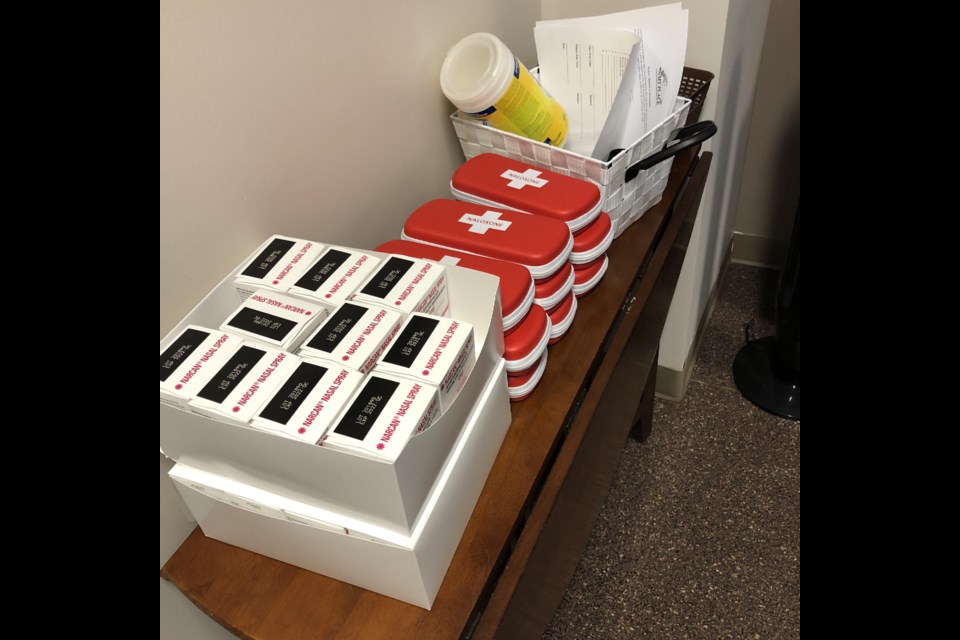A Naloxone information session was held at John Howard Society (JHS) on Nov. 22 as part of Addictions Awareness Week. Jody Oakes, director of JHS in Moose Jaw, was the presenter.
The information session was organized by the Moose Jaw Crystal Meth Strategy Committee. The program co-ordinator of the committee, Mary Lee Booth, was there for the start of the session to give an interview and see how things were going. Supt. Devon Oleniuk of the Moose Jaw Police Service, who chairs the committee, was also present at the beginning of the session.
Naloxone is an opioid receptor antagonist, which means, after entering the body, it aggressively takes up the “parking space” that opioids are trying to use. The opioids floating through the body of someone who has overdosed therefore have nothing to do.
Giving Naloxone to someone who has not taken any opioids will have no effect, and Naloxone cannot be abused.
It is important to note that Naloxone only works for opioids, and will not help with overdoses caused by other drug classes.
Although Naloxone is known for reversing the effects of illegal drug overdoses, it is also recommended and prescribed for those on high doses of prescription painkillers – such as people with chronic pain or those recovering from major surgery.
One of the additional points noted by Oakes during her presentation is that in 2017, the federal government passed the Good Samaritan Act. The Act is part of an approach to drug abuse called harm reduction, which prioritizes life and safety over legal punishment. Under the Good Samaritan Act, drug users who witness an overdose and call 911 are protected from consequences for crimes such as possession or violation of probation.
In cases of overdose, it is always necessary to call 911 as a first step. Naloxone is short-acting, while many opioids can linger in the body for hours. This means that it is possible to counteract an overdose with naloxone, only for the overdose to start happening again later.
During her interview, Booth said, “One thing we really want people to know is that while drug addiction is a health issue, it has many consequences in the areas of social services, justice, and policing. So it is a multi-sectoral, multi-agency problem that deserves a multi-sectoral, multi-agency response. So we have to do this together.”
One of the myths that the Crystal Meth Strategy Committee is fighting is that addiction affects only people with low socioeconomic status or less education.
“Drugs like crystal meth do not discriminate,” Booth said. “It doesn’t care what age you are, what gender, what socioeconomic status you are. If you take it you could be one of those people that become addicted (on) that first try… We really want the community to know that drugs are the enemy, not the person taking them… We want people to extend compassion and empathy and understanding to those people who become substance use disordered.”
More information on opioids and drug addiction, and where to obtain naloxone kits and how they should be used, can be found on the Saskatchewan government website.




